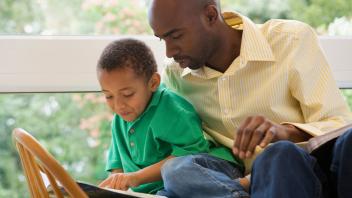Vocabulary plays a key role in the reading process and is critical to reading comprehension. Children learn the meanings of most words indirectly, through everyday experiences with oral and written language. Other words are learned through carefully designed instruction.
Vocabulary refers to the words we must understand to communicate effectively. We can identify four types of vocabulary:
- Listening vocabulary: the words we need to know to understand what we hear.
- Speaking vocabulary: the words we use when we speak.
- Reading vocabulary: the words we need to know to understand what we read.
- Writing vocabulary: the words we use in writing.
Beginning readers must use the words they hear orally to make sense of the words they see in print. Kids who hear more words spoken at home learn more words and enter school with better vocabularies. This larger vocabulary pays off exponentially as a child progresses through school.
Consider, for example, what happens when a beginning reader comes to the word dig in a book. As she begins to figure out the sounds represented by the letters d, i, g, the reader recognizes that the sounds make up a very familiar word that she has heard and said many times. It is harder for a beginning reader to figure out words that are not already part of their speaking (oral) vocabulary.
As children learn to read more advanced texts, they must learn the meaning of new words that are not part of their oral vocabulary.
While most vocabulary is learned indirectly, some vocabulary must be taught directly by: (1) providing kids with instruction in specific words that are important to understanding a particular text; and (2) teaching kids more general word-learning strategies that they can apply to a variety of words, such as analyzing parts of words (e.g., root words).
Understanding vocabulary: why it’s critical to your child’s reading
This video is from Home Reading Helper, a resource for parents to elevate children’s reading at home provided by Read Charlotte . Find more video, parent activities, printables, and other resources at Home Reading Helper .
